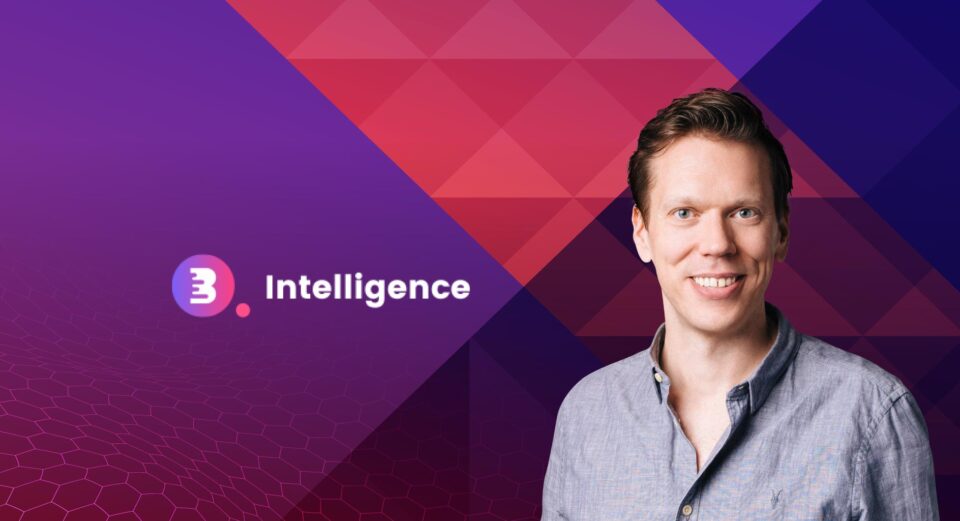“DataOps is about making really high-quality data usable to a wide range of consumers in a predictable way.”
Hi, Carl. Please tell us about your journey into the Dataops industry?
I’ve used my experience in different industries to take a “blank slate” approach to asking questions and solving problems that can help unlock new value. With Burt Intelligence, it was bridging what the engineers were able to do to translate and digest data and connecting that with the way advertising and media operations need to present information to more quickly understand challenges and the potential for optimization. Advertising is a half trillion dollar business that severely lacks operational data solutions. Burt Intelligence is on the path to addressing this by doing the heavy lifting of integrating, structuring, and presenting multiple data sources in a way that is actionable.
What I’m now doing with Burt builds on my 20+ years career across solving similar kinds of challenges in other industries. This is a truly exciting journey, seeing how both the amount of available media and advertising data has grown exponentially in tandem with new processing power and software capabilities to finally operationalize the use of this data.
What’s Legacy Technology? Could Legacy Technology Be Compromising Your Cybersecurity?
How did you cope with the disruptions brought by the pandemic? How did you leverage technology to stay on top of your product development roadmap during the peak of the pandemic months?
We spent most of 2019 transforming Burt towards scaling globally with headquarters in New York and development in multiple European locations. As part of that work, we switched from renting big offices to utilizing co-working spaces and were done with this restructuring in February 2020.
When the pandemic hit, I sat down with my management team to map out what actions were needed to adapt to the new reality and realized that we had already checked all major items on that list. Since development was already distributed across several locations, it was a minor change to have everyone work from their own home office.
That being said, we had to increase the number of meetings, both sprint/roadmap-related as well as purely social calls, to compensate for people not meeting anyone face-to-face by the coffee machine. We have tried many different formats to keep the team’s workflow optimized without losing comradery and several of these traditions will remain a permanent fixture in how we run our company.
What is the most contemporary definition of DataOps? How do you promote this idea across your customer base?
DataOps is about making really high-quality data usable to a wide range of consumers in a predictable way.
Usable data should be cleaned, normalized, structured, mapped, quality-assured and accessed through one single interface without the need for everyone to copy-paste 1400 rows long SQL-queries from their Evernote or write endless INDEX-MATCH formulas in Excel.
Consumers mean everything from hard-core Tensorflow Data Scientists to business users, such as sales reps in need of understanding what to sell and to whom. All of them have needs that a good underlying DataOps process solves for, even if the interfaces they need to access the data differ enormously.
Predictable means ensuring that the data is complete and available simultaneously each day with response times being seconds.
What kind of IT infrastructure does a company require to better leverage the DataOps platform? How do you help your customers achieve this?
Depending on your industry and business model, there are numerous specialized tools focused on solving the DataOps use case for you within that particular vertical. I strongly encourage anyone to use a tool built for your business model rather than developing it in-house, no matter how fun IT might think it is.
For example, Burt Intelligence is specialized in the media and advertising industry and handles DataOps for our customers. Our platform will connect 100+ different data sources and ensure that data is ingested, combined, consistent according to our QA-models, and automate data management and entity resolution to confirm dimensions are normalized so that their analysts can focus 100%, not 20%, of their time on actual analytics. We then export this data to our customer’s data warehouse such as Snowflake, BigQuery or Redshift, ready-made for analysis.
For all the other 97% of employees in the company who are not data scientists, they get access to the Burt Assistant, an AI-driven knowledge-based agent which produces a personalized daily summary with the top most essential events sorted by business impact, guiding them to take a recommended action.
If you’re outside of media and advertising, and you don’t know where to start looking, I would suggest Fivetran, Snowflake, dbt and Looker to quickly set up with a very competent data stack which you can implement DataOps processes upon.
AI and Analytics
Could you tell us more about AIops and how AI analytics technology investments play a role in adoption of advanced augmented intelligence solutions for BA / BI Teams?
A true business intelligence solution provides valuable insights and guides users toward making data-driven decisions. The half trillion dollar advertising industry is shockingly complex and keeps on evolving with new digital capabilities but despite its size, there is a massive opportunity to provide an industry-specific dataops platform to tangible improve revenues and help more people reap the benefits of AI.
Latest ITechnology Insights: ITechnology Interview with Shawn Rogers, VP Analytics Strategy and Corporate Marketing at TIBCO
What are the “Hits” and “Misses” with AI in DataOps? How do you use AI and ML in Burt AI?
A common challenge within AI is over-reliance on a particular (favourite) algorithm, trying to solve everything too soon with the same Python package. So much in the solution lies in breaking down and structuring the challenge in a creative way and then choosing the best approach.
The beauty is of course when you sit and analyze the results and just scratch your head when you try to figure out how on earth it managed to produce a certain result.
“AI” is such a broad topic and is heavily dependent on the context and business use case. Most mature applications within “AI” seem to be within natural language processing (NLP) and image recognition, whereas we primarily work with multidimensional datasets containing time series data, which is an entirely different domain.
At Burt, we use anomaly detection to detect significant outliers, reinforcement learning algorithms to generate forecasts and neural networks to adjust parameters and model overlapping events in the future. In other parts of the platform, we use knowledge-based agents to recommend actions tied to a particular event.
Areas we’re excited about and working on are incorporating more regenerative feedback loops without necessarily asking the user if we did a good job or not on a specific recommendation.
Tell us more about hiring trends in the dataops market influenced by AI and data science:
In certain geographies with top tier engineering schools, I see a lot of talented, freshly baked CS grads with a passion for data science who want to work with machine learning. The challenge is that even though they might have recent experience from solving clearly defined problems, such as vacuum cleaner simulations, chess/backgammon contenders or chat bots, school doesn’t necessarily teach how to break down noisy real-world problems or how to solve problems with algorithms that can produce good enough results. The true challenge is finding talent with interest in both business challenges and algorithms.
Industry Trends / Insights
Which industries have you been keenly following to understand current technology trends?
While the impact of COVID has been a fundamental challenge for all of us in how we live and work, I’ve been fascinated to watch how infectious disease experts have been using data to predict the trajectory of the pandemic and help guide the most efficacious policy responses. Perhaps this is one of the most profound examples, ever, of the power of data science and AI to make sense of a highly complex and unpredictable situation.
Your favorite podcast / webinar that you have listened to in recent times:
I have been a fan of Don Lemon at CNN for a long time and have been a loyal listener of his eye-opening “Silence is not an option” podcast.
Within the AI domain, I think the team behind “Towards Data Science” is doing a great job and I have primarily followed them on Medium for the last couple of years.
Thank you, Carl ! That was fun and we hope to see you back on itechnologyseries.com soon.
[To participate in our interview series, please write to us at sghosh@martechseries.com]
Carl Leskinen is the Co-Founder and CEO of Burt Intelligence, the leading source of trusted revenue intelligence for the advertising industry. Carl believes that the advertising industry is in need of simplified tools and services that more seamlessly navigate the increasingly complex and competitive media landscape. With over two decades of experience in B2B enterprise software, Carl utilizes his expertise in analyzing data and advising advertising professionals across publishers and brands on how best to make decisions that impact their success and profitability. Carl, along with Gustav von Sydow, founded Burt Intelligence in 2018, and he’s held multiple roles within the organization including President & CTO before taking over as CEO in 2019.
Prior to Burt Intelligence, Carl spent the better part of a decade as a consultant and systems architect within the automotive, marine and telecommunications industries. Carl is the inventor behind three global patents and received his Master’s Degree in Physics from Chalmers University in Gothenburg, Sweden.
Burt Intelligence provides revenue insights for publishers and brands to analyze and share their advertising data. Our solutions are used by thousands of the most forward-thinking ad-operations, programmatic and sales professionals to accelerate revenue growth, reduce customer churn, provide insight on better decision making, and address the current state of advertising campaigns in real time.



